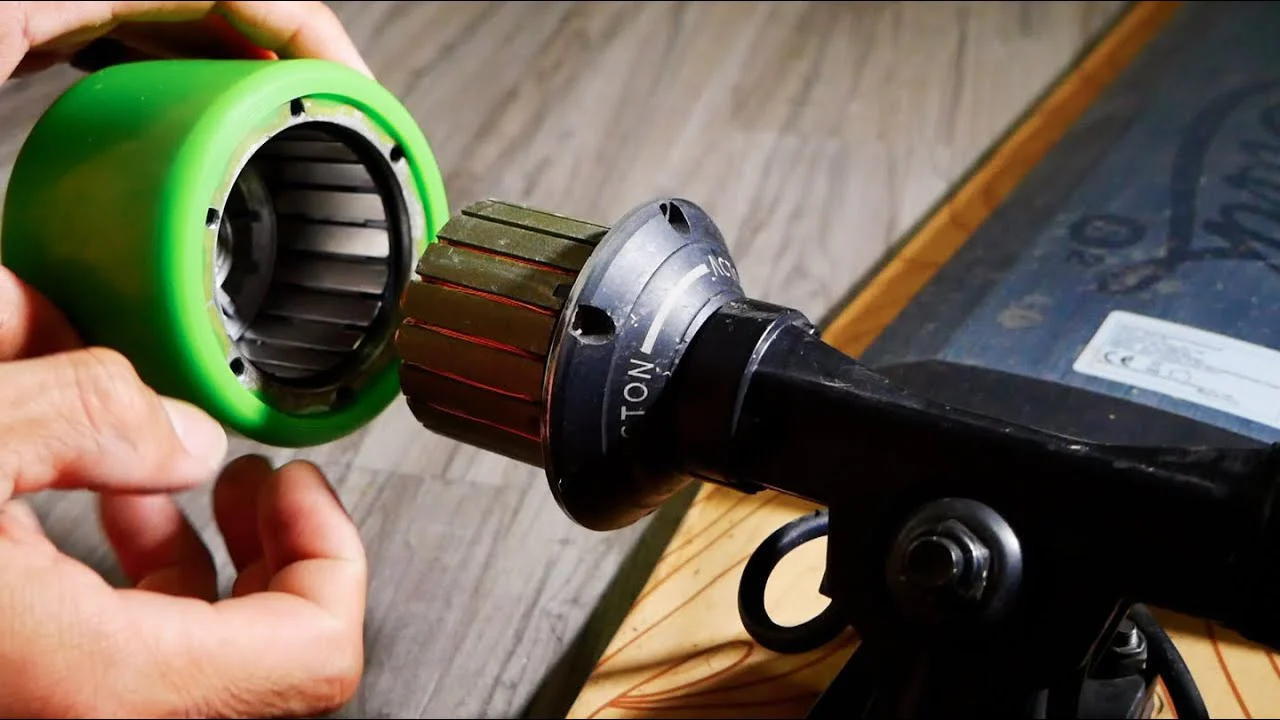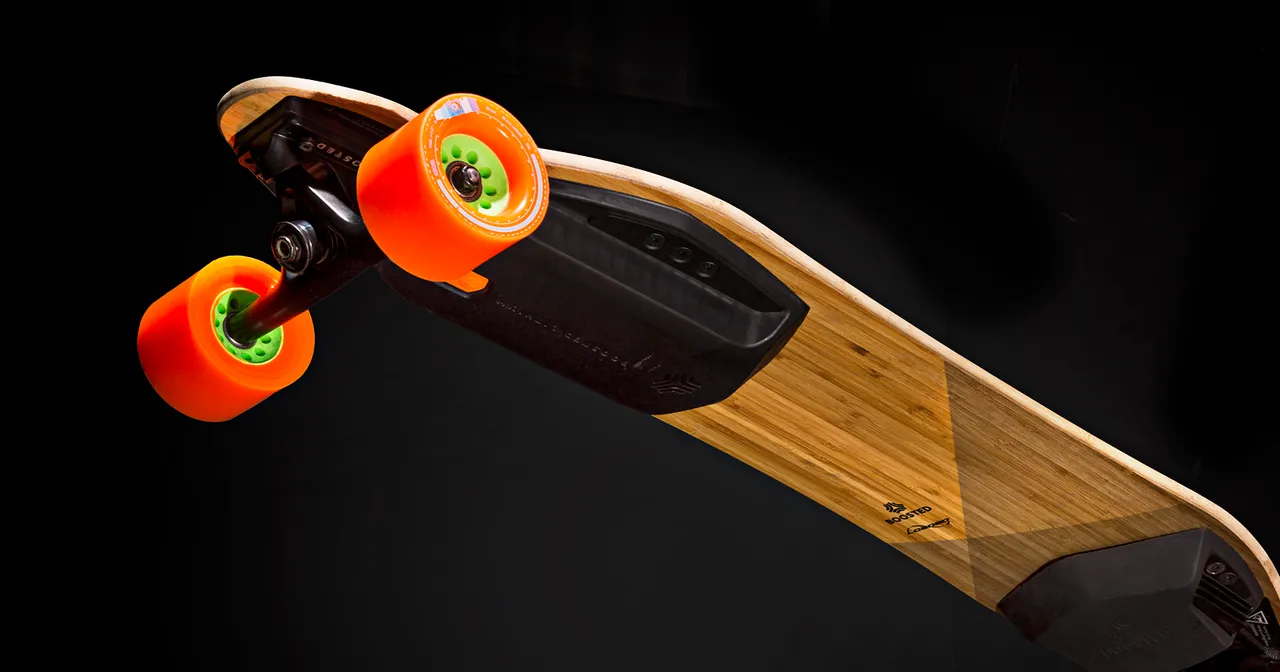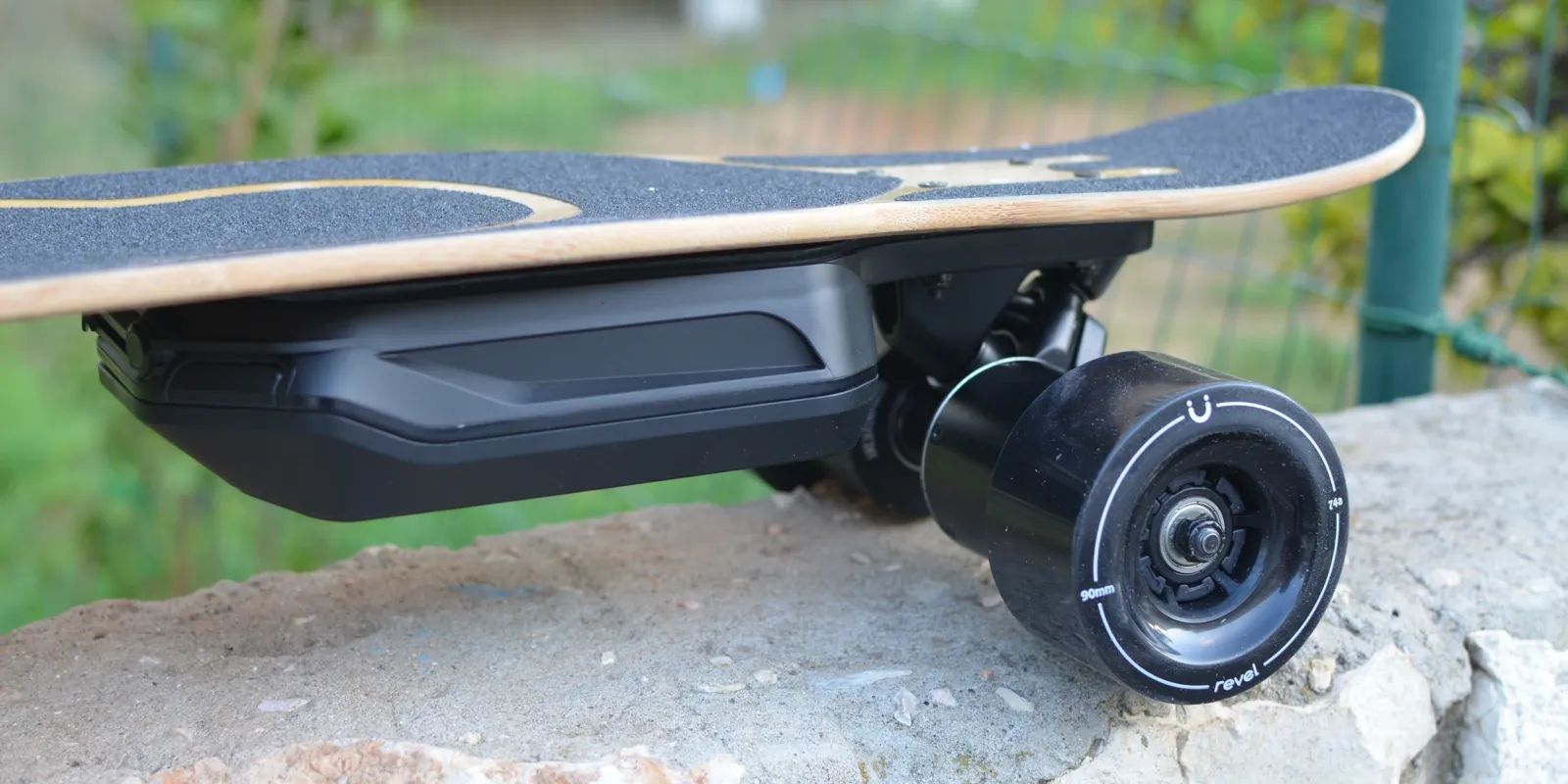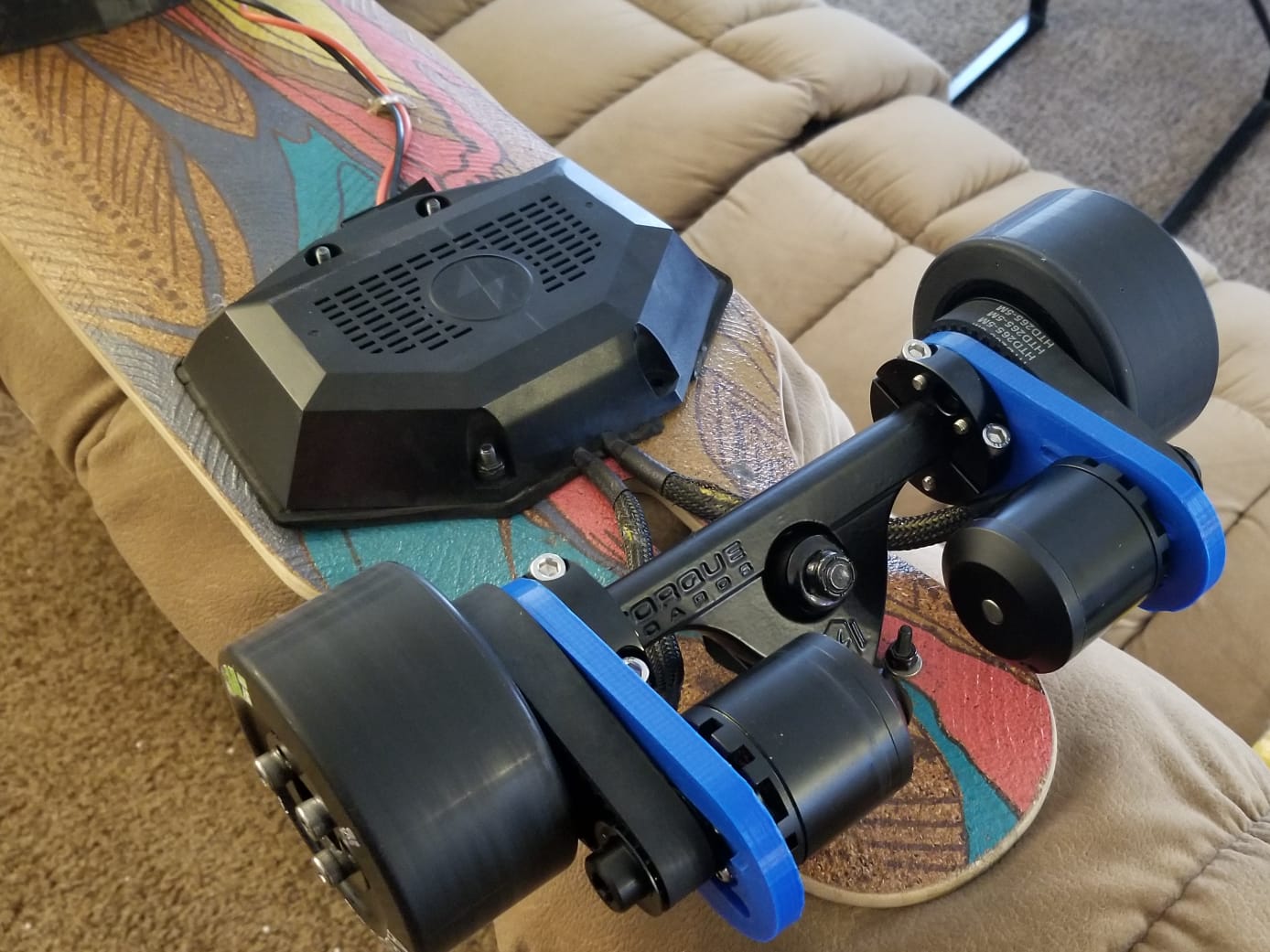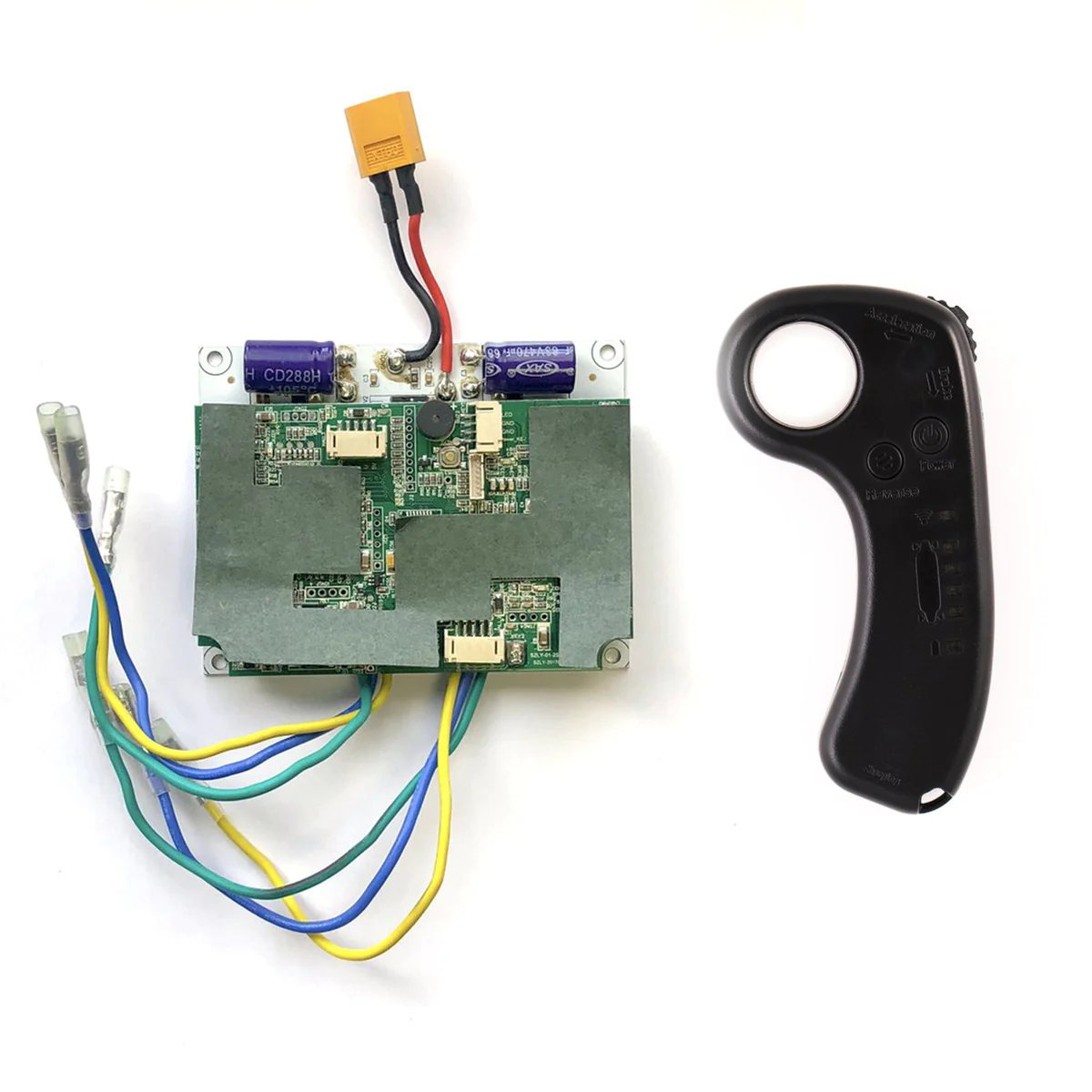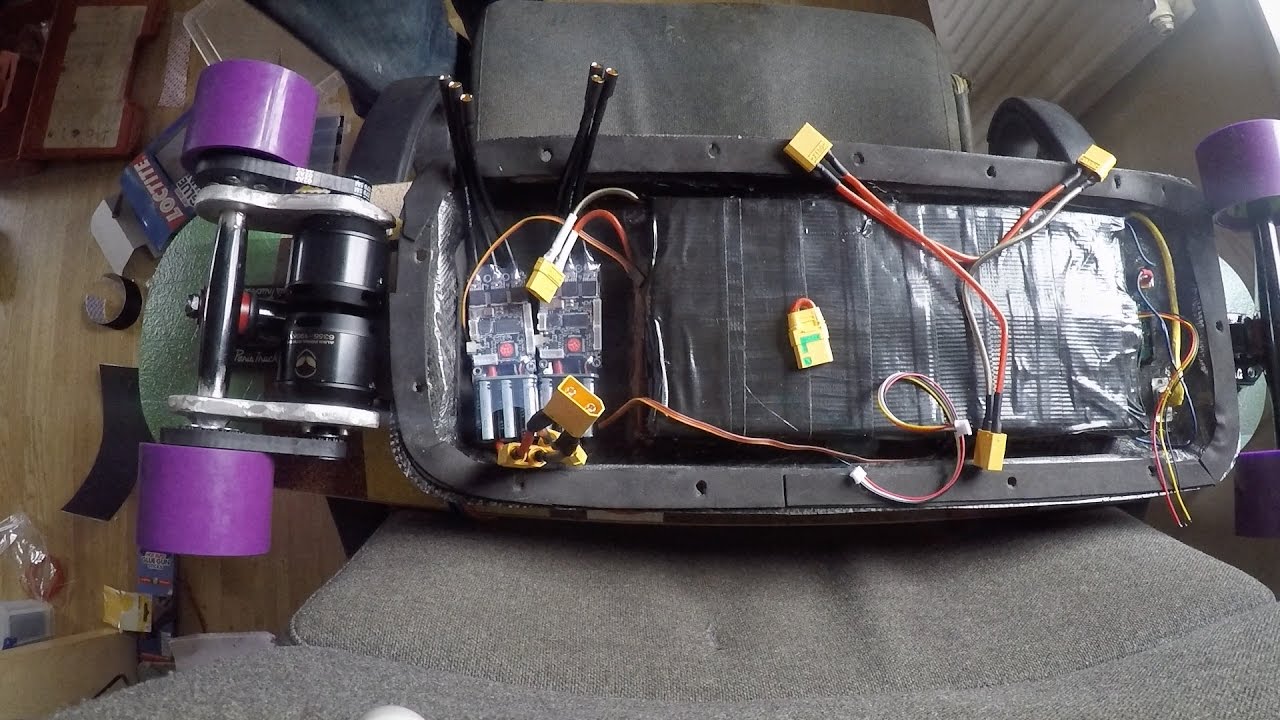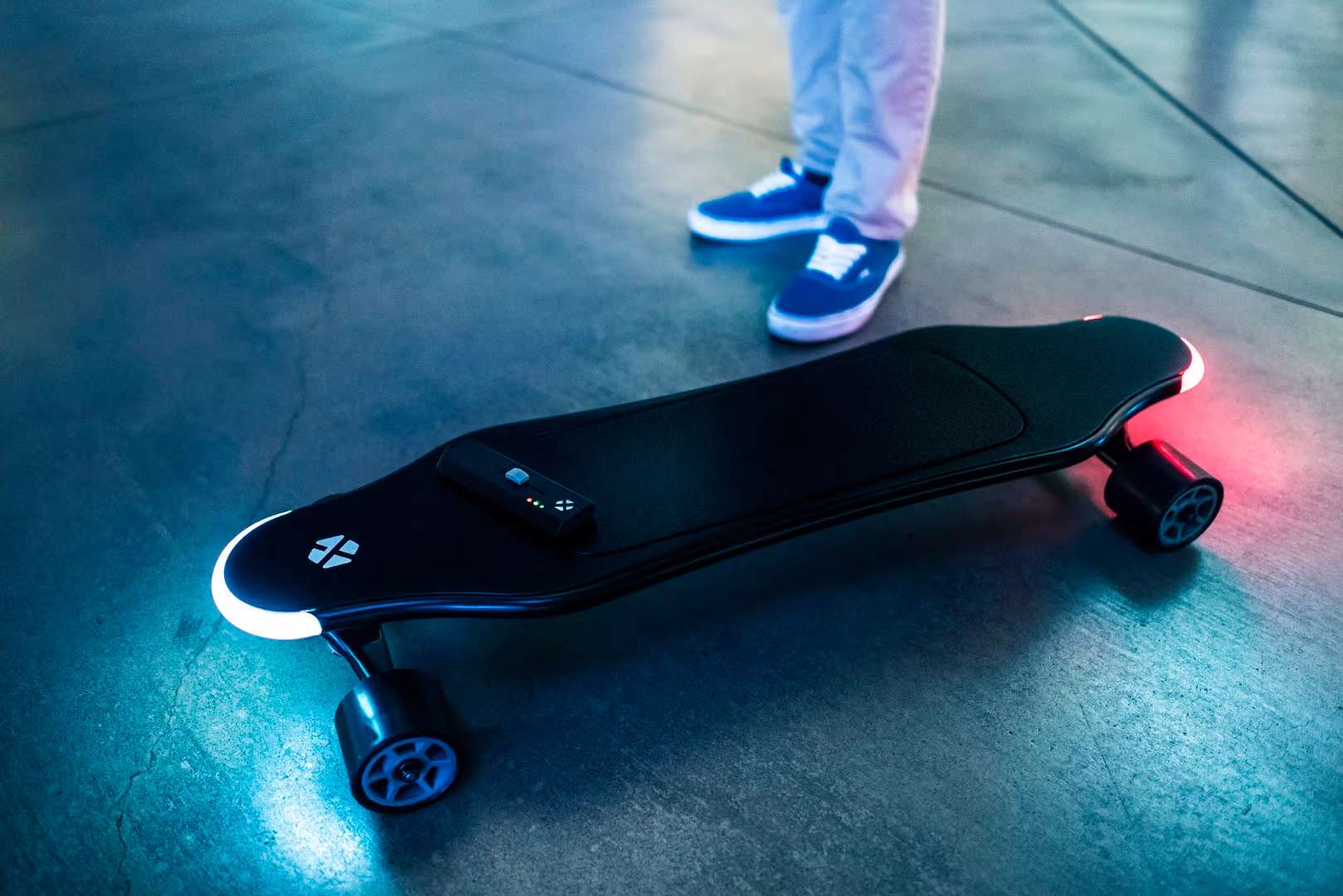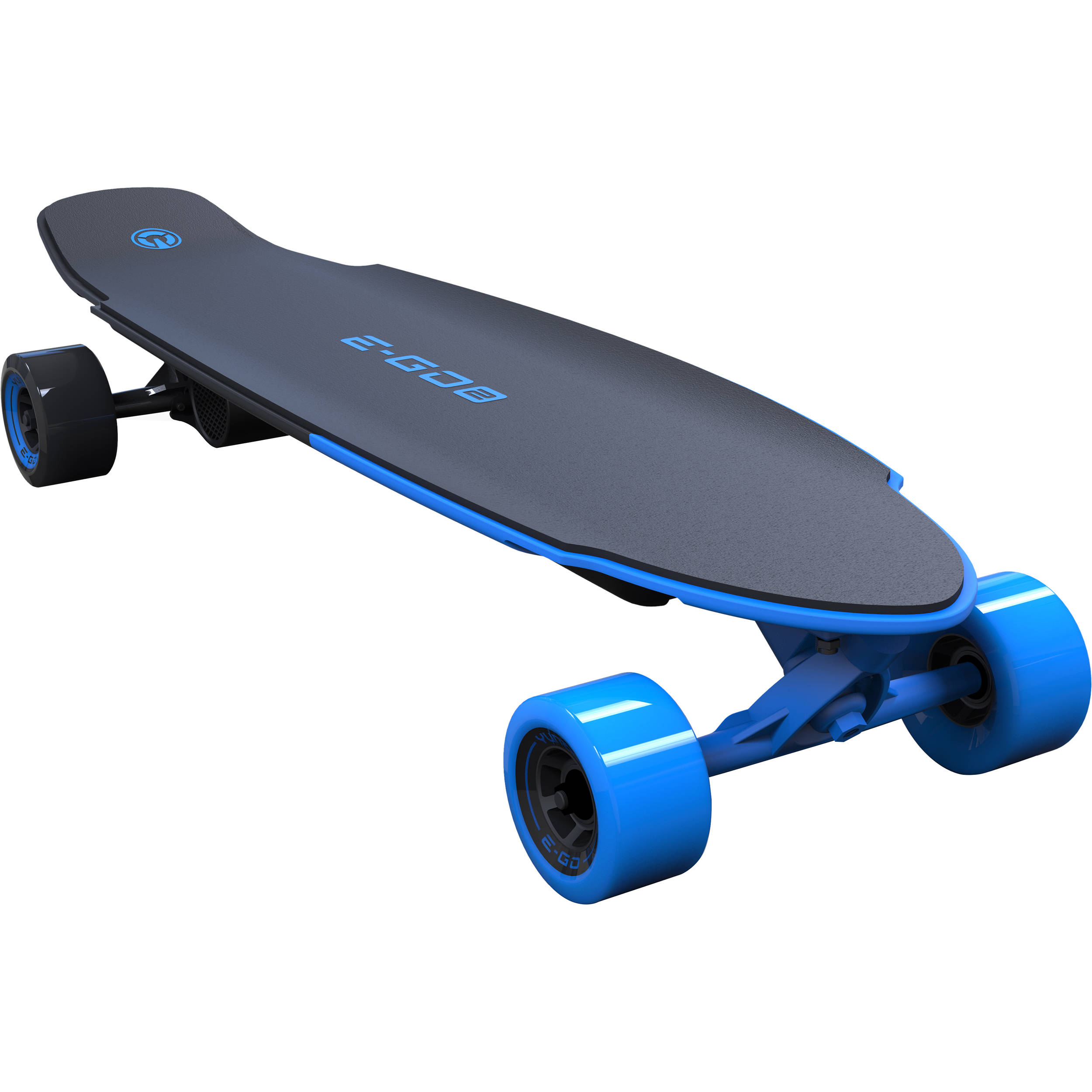Introduction
Welcome to the exciting world of electric skateboards! Whether you are a beginner or a seasoned rider, selecting the right motor for your electric skateboard is crucial for a smooth and exhilarating ride. The motor is the heart and soul of your skateboard, providing the power and performance that propels you forward. But with so many options available, how do you choose the perfect motor for your needs? In this article, we will discuss the key factors you should consider when selecting a motor for your electric skateboard.
When it comes to electric skateboard motors, there is no one-size-fits-all solution. Different riders have different preferences and riding styles, and the ideal motor will vary depending on factors such as power, torque, motor type, and efficiency. By understanding these factors and how they relate to your specific needs, you can make an informed decision that will enhance your overall skateboarding experience.
Before we delve into the specifics, it’s important to note that choosing the right motor involves finding a balance between performance and practicality. While a high-power motor might deliver impressive speed, it may also drain your battery quickly. On the other hand, a motor with high torque may provide excellent uphill climbing abilities but might be less suited for flat or cruising terrains. Assessing your riding preferences and needs will guide you in making the best motor selection.
In the next sections, we will explore the important factors to consider when choosing a motor for your electric skateboard. By taking these factors into account, you can narrow down your options and make an informed decision that results in a thrilling and reliable ride.
Factors to Consider
When choosing a motor for your electric skateboard, there are several key factors that you need to consider. These factors will determine the performance, efficiency, and overall riding experience of your skateboard. Let’s take a closer look at each of these factors:
- Power: The power of the motor is measured in watts and determines how fast your skateboard can go. For riders who crave speed and exhilaration, a higher power motor is recommended. However, keep in mind that higher power motors can drain the battery faster.
- Torque: Torque refers to the twisting force that allows your skateboard to accelerate and handle slopes. A motor with high torque will provide better hill climbing abilities and smoother acceleration. If you plan to ride in hilly areas or need quick acceleration, choose a motor with higher torque.
- Motor Type: There are two main types of motors for electric skateboards: hub motors and belt-driven motors. Hub motors are compact, integrated into the wheel, and provide a sleek look. Belt-driven motors, on the other hand, offer more customization options and are known for their higher torque capabilities.
- Kv Rating: The Kv rating indicates the motor’s RPM (revolutions per minute) per volt. A higher Kv rating implies a faster motor, while a lower Kv rating offers more torque. Consider your riding style and terrain to determine the appropriate Kv rating for your needs.
- Motor Mount Compatibility: Make sure the motor you choose is compatible with your skateboard’s motor mount. Check the specifications and dimensions to ensure a proper fit.
- Weight: The weight of the motor can impact the overall weight distribution of your skateboard. Opt for a motor that strikes a balance between power and weight, as this can affect maneuverability and stability.
- Efficiency: A more efficient motor will maximize your battery life and extend your riding range. Look for motors with higher efficiency ratings to get the most out of your battery charge.
- Budget: Last but not least, consider your budget. Motors with higher power and advanced features tend to be more expensive. Set a realistic budget and find a motor that meets your requirements without breaking the bank.
By considering these factors and evaluating your specific needs, you can narrow down your motor options and find the perfect fit for your electric skateboard. In the next section, we will explore some popular motor options that are widely favored by electric skateboard enthusiasts.
Power
When choosing a motor for your electric skateboard, one of the most important factors to consider is the power of the motor. The power rating of a motor is measured in watts and determines how fast your skateboard can go. A higher power motor will provide more speed and acceleration, giving you an exhilarating ride.
The power of the motor directly affects the overall performance of your electric skateboard. Riders who crave high speeds and intense acceleration should opt for a motor with a higher power rating. However, it’s important to note that higher power motors also consume more energy, resulting in decreased battery life. Therefore, it’s essential to carefully consider your riding style and the battery capacity of your skateboard when selecting a motor with the appropriate power.
For beginners or riders who prefer a more laid-back riding experience, a motor with moderate power may be more suitable. These motors offer a balance between speed and energy consumption, providing a comfortable and enjoyable ride without draining the battery too quickly.
When choosing the power rating for your motor, also consider the terrain you plan to ride on. If you frequently encounter hills or inclines, a higher power motor will ensure that your skateboard can maintain speed and handle climbs with ease. On the other hand, if you mainly ride on flat surfaces and prioritize energy efficiency, a motor with a moderate power rating will suffice.
Keep in mind that while power is an important aspect, it’s not the only factor to consider when choosing a motor for your electric skateboard. The torque, motor type, and efficiency of the motor also play significant roles in the overall performance of your skateboard. It’s crucial to find the right balance between power and other factors to ensure an optimal riding experience.
Next, we will delve into the factor of torque and its significance when selecting a motor for your electric skateboard.
Torque
When it comes to choosing a motor for your electric skateboard, the torque rating is another crucial factor to consider. Torque refers to the twisting force generated by the motor that allows your skateboard to accelerate, climb hills, and handle various terrains with ease.
A motor with higher torque will provide better hill climbing abilities and smoother acceleration, making it ideal for riders who frequently encounter steep inclines or want quick bursts of speed. The torque of the motor plays a significant role in how well your electric skateboard performs in challenging terrains. It determines how much force the motor can exert to propel your skateboard forward and overcome resistance.
The torque of the motor is particularly important for riders who enjoy off-road adventures, as it helps in navigating through rough and uneven surfaces. Additionally, riders who carry heavier loads or prefer a more responsive ride will benefit from a motor with higher torque.
On the other hand, if you primarily ride on flat surfaces and prioritize energy efficiency over powerful acceleration, a motor with moderate torque may be more suitable. It will still provide adequate speed and performance while maximizing your battery life.
When selecting a motor based on torque, consider the type of riding you enjoy and the terrains you frequently encounter. A higher torque motor is recommended for riders who crave powerful acceleration, excellent hill climbing capabilities, and seamless performance on rugged terrains. For riders seeking a smoother and more energy-efficient ride, a motor with moderate torque will suffice.
It’s important to strike a balance between power and torque when choosing a motor for your electric skateboard. A motor with high power but low torque may result in a lackluster climbing ability, while a motor with high torque but low power may not provide the desired top speed. By evaluating your riding style, terrain requirements, and overall preferences, you can select a motor that delivers the perfect balance of power and torque for an exhilarating skateboarding experience.
In the next section, we will explore the different types of motors available for electric skateboards and their respective advantages.
Motor Type
When selecting a motor for your electric skateboard, one of the key decisions you’ll need to make is the type of motor to choose. There are two main types of motors commonly used in electric skateboards: hub motors and belt-driven motors. Each type has its own advantages and considerations, so let’s explore them further.
Hub Motors:
Hub motors are becoming increasingly popular in the electric skateboard industry. Unlike belt-driven motors, hub motors are integrated directly into the wheels of the skateboard, providing a sleek and minimalist design. This design eliminates the need for belts, pulleys, or gears, resulting in a cleaner and more streamlined appearance.
One of the biggest advantages of hub motors is their simplicity and maintenance-free nature. Since they are built directly into the wheels, there are no external moving parts that need to be adjusted or replaced, reducing the chances of mechanical issues. Additionally, hub motors offer a direct drive system, which means there is no power loss due to belt slippage or friction.
Hub motors also provide a regenerative braking feature, allowing the motor to recharge the battery while slowing down or braking. This feature not only increases the riding range of your electric skateboard but also contributes to a more efficient energy usage.
However, hub motors do have some limitations. They tend to have a lower torque output compared to belt-driven motors, which may affect their climbing abilities, especially on steeper inclines. Additionally, due to the integration within the wheels, hub motors can create a rougher ride on rough or uneven terrains.
Belt-Driven Motors:
Belt-driven motors, as the name suggests, utilize a belt and pulley system to transfer power from the motor to the wheels. This design allows for greater flexibility and customization options. You can adjust the gear ratio by changing the size of the pulleys, enabling you to fine-tune the performance of your electric skateboard.
The main advantage of belt-driven motors is the ability to achieve higher torque output. This makes them an excellent choice for riders who enjoy off-road adventures, need to tackle steep hills, or require quick acceleration. The belt system can also provide a smoother ride by absorbing some of the vibrations and shocks from the road.
However, belt-driven motors do require more maintenance compared to hub motors. The belts can wear over time and may need to be replaced periodically. Additionally, the external components, such as the belt, pulleys, and motor mount, may require occasional adjustments or tightening to maintain optimal performance.
Ultimately, the choice between hub motors and belt-driven motors depends on your specific riding needs and personal preferences. If you prioritize a low-maintenance, sleek design and don’t require high torque capabilities, hub motors offer an attractive option. On the other hand, if you seek customizable performance, higher torque, and a smoother ride, belt-driven motors may be the better choice.
In the next section, we will discuss the importance of the Kv rating when selecting a motor for your electric skateboard.
Kv Rating
When considering which motor to choose for your electric skateboard, one of the important factors to take into account is the Kv rating. The Kv rating refers to the motor’s RPM (revolutions per minute) per volt. It indicates how fast the motor spins for a given voltage applied to it.
A higher Kv rating implies a faster motor, while a lower Kv rating indicates a motor with more torque. Understanding the Kv rating is crucial for selecting a motor that aligns with your desired riding style and terrain.
If you prefer high-speed rides and prioritize reaching top speeds quickly, a motor with a higher Kv rating is recommended. These motors offer a higher RPM per volt, enabling faster acceleration and achieving higher top speeds. They are best suited for riders who crave the thrill of speed and plan to ride on mostly flat or gently inclined terrains.
On the other hand, if you prioritize torque and require increased climbing abilities, a motor with a lower Kv rating would be more suitable. A lower Kv rating motor will have more windings, resulting in higher torque output. These motors excel in offering power and control for riders who frequently encounter hills or demanding terrains.
It’s important to note that the Kv rating is just one aspect to consider when selecting a motor. The overall power and efficiency of the motor, as well as the battery, controller, and other components of the electric skateboard, also play significant roles in the performance. Therefore, it’s crucial to find a balance between Kv rating, power, torque, and other factors for optimal performance.
When choosing the appropriate Kv rating, take into account your preferred riding style, terrain conditions, and the overall setup of your electric skateboard. For example, if you have a smaller wheel size and desire more torque for off-road adventures or climbing steep hills, a lower Kv rating motor would be a better choice. Conversely, if you have a larger wheel size and prioritize speed on flat surfaces, a higher Kv rating motor would be more suitable.
By considering the Kv rating alongside other factors, you can fine-tune your motor selection to match your riding preferences and optimize your electric skateboard’s performance.
In the next section, we will discuss the importance of motor mount compatibility and how it influences your motor selection.
Motor Mount Compatibility
When choosing a motor for your electric skateboard, it’s essential to consider its compatibility with your skateboard’s motor mount. The motor mount is the component that holds the motor securely in place on the deck.
Motor mount compatibility ensures that the motor can be properly installed and aligned with the wheels and pulleys. It also ensures that the motor mount is designed to handle the specific torque and power requirements of the motor.
Before purchasing a motor, carefully review the specifications and dimensions provided by the manufacturer. Check if the motor mount on your skateboard is designed to accommodate the size and mounting requirements of the motor you are considering. Some motor mounts may only be compatible with specific motors or require additional adapters for a proper fit.
Additionally, consider the type of motor mount you have and its mounting system. Some motor mounts use a clamp-style design, while others may require drilling holes into the deck for installation. Ensure that the motor’s mounting system aligns with your motor mount for a seamless and secure attachment.
Motor mount compatibility is crucial for both safety and performance. Improperly fitting motors can result in wobbling, vibrations, or even detachment during rides. This can lead to accidents or damage to the motor and skateboard. Avoid potential risks by choosing a motor that is specifically designed for compatibility with your skateboard’s motor mount.
If you are unsure about the compatibility between your motor mount and a specific motor, reach out to the manufacturer or consult with experienced electric skateboard enthusiasts. They can provide guidance on suitable motor options or recommend compatible motor mounts if necessary.
By ensuring motor mount compatibility, you can have peace of mind knowing that your motor is securely attached and can perform optimally with your electric skateboard. Now that we have covered motor mount compatibility, let’s move on to discussing the importance of considering the weight of the motor.
Weight
When choosing a motor for your electric skateboard, considering the weight of the motor is an important factor that often gets overlooked. The weight of the motor can impact the overall weight distribution, stability, and maneuverability of your skateboard.
A heavier motor can affect the balance and center of gravity of your electric skateboard. It can make the front or back end feel heavier, potentially impacting your ability to control the board and perform maneuvers. If the weight distribution is unbalanced, it may lead to instability and hinder your overall riding experience.
Furthermore, a heavier motor can increase the total weight of your electric skateboard. This weight can have implications for portability, especially if you plan on carrying or transporting your skateboard frequently. It is important to consider how the weight of the motor will impact your ability to maneuver and store your skateboard.
However, it’s important to find a balance between weight and power. While a lighter motor may provide better maneuverability, it may sacrifice power and performance. Conversely, a heavier motor may deliver more power but can potentially impact the agility and responsiveness of the skateboard.
Consider your riding style and preferences when evaluating the weight of the motor. If you prioritize nimble and agile maneuvers, a lighter motor may be preferable. On the other hand, if you require robust power for uphill climbs and off-road riding, a slightly heavier motor may be necessary.
It is also worth noting that the weight of the motor should be considered in conjunction with other components of your electric skateboard. The overall weight distribution, including the weight of the battery, deck, and other components, should be taken into account to achieve optimal performance and stability.
Ultimately, finding the right balance between weight and performance is essential when choosing a motor for your electric skateboard. Consider how the weight of the motor will impact the overall riding experience, maneuverability, and portability. By evaluating your needs and preferences, you can choose a motor that offers the ideal combination of power and weight for an enjoyable and balanced ride.
Next, we will discuss the importance of motor efficiency and its impact on your electric skateboard’s performance.
Efficiency
Efficiency is a crucial factor to consider when selecting a motor for your electric skateboard. An efficient motor can have a significant impact on the overall performance, battery life, and riding range of your skateboard.
In the context of electric skateboard motors, efficiency refers to how effectively the motor converts electrical energy from the battery into mechanical energy to propel your skateboard. A more efficient motor will require less energy to achieve the same level of performance compared to a less efficient motor. This means you can ride for longer distances without draining the battery as quickly.
An efficient motor can contribute to an extended riding range, allowing you to enjoy longer rides before needing to recharge. This is particularly important for riders who use their electric skateboards for commuting or long-distance rides, as it reduces the frequency of charging and increases the overall convenience.
Furthermore, an efficient motor can enhance the overall riding experience by producing less heat and minimizing energy wastage. This can result in a smoother and quieter ride, as well as extending the lifespan of the motor and other electrical components.
When considering the efficiency of a motor, it’s essential to examine its specifications or look for efficiency ratings provided by the manufacturer. Keep in mind that different motors may have varying degrees of efficiency, and it’s worth investing in a higher efficiency motor if you prioritize longer rides and energy conservation.
However, it’s important to note that efficiency should not be the sole determining factor when choosing a motor. Other aspects, such as power, torque, and compatibility, should also be considered to ensure that the motor aligns with your specific riding needs.
Finally, it’s worth mentioning that the overall efficiency of your electric skateboard is influenced by various factors, including the motor controller, battery, and even riding habits. While selecting an efficient motor is important, it’s also essential to optimize other components and maintain good riding practices to achieve the best overall efficiency.
By taking into account the efficiency of the motor and considering how it contributes to battery life, riding range, and overall performance, you can make an informed decision that maximizes the enjoyment and efficiency of your electric skateboard.
In the last section, we will discuss the importance of considering your budget when choosing a motor for your electric skateboard.
Budget
When choosing a motor for your electric skateboard, your budget plays a significant role in determining the options available to you. Electric skateboard motors come in a wide range of prices, and setting a realistic budget helps you make a decision that aligns with your financial capabilities.
It’s important to find a balance between your desired motor specifications and your budget. Higher-powered motors with advanced features tend to be more expensive, while motors with lower power and fewer bells and whistles are generally more budget-friendly.
Consider your riding needs and preferences to determine what features and performance aspects are essential for you. If you prioritize speed and power, you may need to allocate a larger portion of your budget to a high-performance motor. On the other hand, if you’re more focused on casual riding and don’t require extreme speeds or torque, a more budget-friendly motor will suffice.
It’s worth noting that while a higher-priced motor may offer superior performance and durability, there are also affordable options that provide excellent value for money. Research different brands and models, read reviews, and compare prices to identify motors that offer the best combination of quality and affordability.
Additionally, consider the overall cost of your electric skateboard setup, including other components such as the battery, controller, and deck. It’s important to allocate a portion of your budget to these components as well, ensuring that you have a well-rounded and properly functioning electric skateboard.
Keep in mind that your budget also includes any potential maintenance or replacement costs for the motor in the future. It’s always wise to prioritize quality and reliability to minimize the chances of costly repairs or replacements down the line.
By setting a budget and doing thorough research, you can find a motor that meets your requirements without exceeding your financial limitations. It’s possible to achieve a balance between performance, quality, and affordability with careful consideration and smart decision-making.
With the budget factor taken into account, you can now make an informed decision that suits your financial situation and ensures that you receive the best value for your investment.
Now that we have explored all the important factors to consider when choosing a motor for your electric skateboard, let’s recap the key points and wrap up the article.
Popular Motor Options
When it comes to choosing a motor for your electric skateboard, there are several popular options that have gained recognition and praise among electric skateboard enthusiasts. These motors are known for their performance, reliability, and compatibility with a wide range of electric skateboard setups. Let’s explore some of these popular motor options:
- Boosted Stealth Motor: The Boosted Stealth motor is highly regarded for its powerful performance and smooth acceleration. It offers high torque capabilities and impressive top speeds, making it suitable for riders who crave speed and agility.
- Meepo V3 Motor: The Meepo V3 motor is a cost-effective option that doesn’t compromise on performance. It provides a good balance between power and efficiency, delivering a smooth and enjoyable ride. The Meepo V3 motor is known for its reliability and durability.
- Enertion Raptor Motor: The Enertion Raptor motor is designed for experienced riders who demand exceptional power and speed. It boasts high torque and the ability to conquer steep inclines with ease. The Enertion Raptor motor is well-regarded for its build quality and performance.
- Evolve GTX Motor: The Evolve GTX motor is known for its versatility and adaptability. It offers excellent power and torque, making it suitable for both urban commuting and off-road adventures. The Evolve GTX motor is often praised for its smooth acceleration and impressive battery life.
- Metrakit MBS All-Terrain Motor: The Metrakit MBS All-Terrain motor is a robust and high-torque option designed for off-road enthusiasts. It provides exceptional traction and control on rough terrains, allowing riders to explore various environments with confidence.
These are just a few examples of popular motors available in the market. It’s important to note that individual preferences and riding styles may influence your choice of motor. Researching and reading reviews from real users can provide valuable insights into the performance and compatibility of specific motors.
Before making a decision, always consider your personal riding preferences, terrain requirements, and budget. By evaluating these factors and choosing a reputable and reliable motor brand, you can find a motor that meets your needs and enhances your electric skateboard experience.
With a plethora of motor options available, you can embark on an electrifying journey with a motor that delivers the power, torque, and reliability you desire.
Now that you have a comprehensive understanding of motor selection, it’s time to choose the perfect motor for your electric skateboard and gear up for a thrilling ride!
Conclusion
Choosing the right motor for your electric skateboard is a crucial decision that can greatly impact your riding experience. By considering factors such as power, torque, motor type, Kv rating, motor mount compatibility, weight, efficiency, and budget, you can make an informed decision that suits your specific needs and preferences.
Power and torque are important for achieving the desired speed and acceleration, as well as conquering hills and challenging terrains. The motor type, whether hub motors or belt-driven motors, offers different advantages in terms of simplicity, maintenance, customization, and torque capabilities.
The Kv rating determines the motor’s RPM per volt, affecting the speed and torque output. Motor mount compatibility ensures a secure and proper fit of the motor on your skateboard. Considering the weight of the motor is essential for maintaining balance, stability, and maneuverability.
Efficiency plays a crucial role in maximizing battery life and extending the riding range. Budget considerations help you find a motor that meets your requirements without exceeding your financial limitations. Additionally, exploring popular motor options and reading reviews can provide insights into the performance and compatibility of different motors.
Remember, finding the perfect motor for your electric skateboard involves striking a balance between various factors and aligning them with your riding style, terrain preferences, and budget constraints.
By taking the time to assess your needs and doing thorough research, you can select a motor that enhances your electric skateboard performance, offers a thrilling and enjoyable riding experience, and provides great value for your investment.
Now that you have all the necessary information, it’s time to gear up, select your motor, and embark on exhilarating rides with your electric skateboard!







